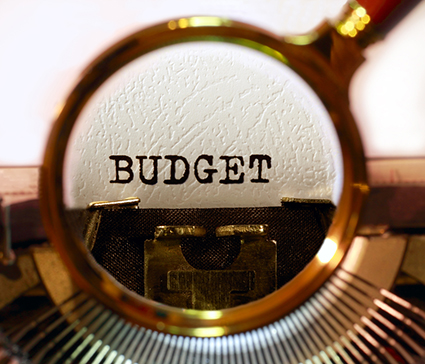President Hassan Rouhani recently announced that the government’s oil revenue have shrunk by 30 percent. The announcement triggered a hot debate among analysts and experts on how to best tackle a possible budget deficit this fiscal year (ending March 20, 2015). Economists have also recommended the budget planners to avoid any hasty or short-term solutions as their adverse impacts could overshadow their benefits.
Within one month, the government has planned to submit a budget bill for the next fiscal year to the parliament at a time when oil price fluctuations over the past few weeks have cast serious doubts on substantial oil revenue generation. Among the issues being discussed in Tehran is how much deficit the government would face by the end of this fiscal year and what solutions are on the table to reduce the deficit.
Some analysts dismiss a possible budget deficit this year arguing that they believe the limited scope of oil price fluctuation will not affect the government’s budget. They say the government has so far managed to allocate the whole budget required for development projects by squeezing spending.
Earlier, Mohammad Bagher Nobakht, the vice president for planning and strategic supervision, shared the same view. He said the Rouhani administration’s disciplinary approach in the past year would prevent deficit in the remaining months of this fiscal year.
Solutions
If a deficit is on the way, there will be six remedies, Donyay-e Eghtesad newspaper suggested.
1. Borrowing From the Central Bank (Printing Money)
Some economists believe that the chronic inflation rate of over 20 percent and unstable economic situation over the past 36 years are good reasons why the government should avoid eyeing central bank’s resources to compensate a possible budget deficit. This approach was typically adopted by previous governments as a quick fix; however, it would expand the monetary base and push inflation higher in the long run. As the president has repeatedly considered borrowing from the central bank as the red line of his administration, it seems this solution is already off the table.
2. Raising Taxes
Among other remedies available is that the government could opt to generate more revenue by raising direct and indirect taxes – a solution that is not recommended by economists as at a time when the country is grappling with stagflation (high inflation and recession at the same time). Under such circumstances, the government may even decide to further cut taxes in a bid to reduce pressure on domestic producers, experts argue.
However, there are other economists who believe that only a small portion of economic players in the country pay taxes. This group of experts believes the government needs to identify tax evaders and make them pay their share to shore up the economy. Latest statistics suggest that only 40 percent of businesses in Iran pay their tax. The figure in Turkey, a neighboring country, stands at 80 percent.
3. Subsidy Reform
The 30-percent decline in oil revenues in the past two months has apparently made administration officials to reconsider their decision to implement the third phase of the subsidy reform plan in the next year, starting March 21, 2015.
Economists have recommended that the government should carry on with its scheme to provide cash handouts to Iranian citizens. However, they have urged officials to exclude the richest households from the subsidy reform plan.
It is estimated that the government can save 200,000 billion rials by excluding 50 percent of cash-handout recipients.
On the other hand, the government can also increase its revenues by increasing energy carrier prices in the coming months. The economists argue that the government does not even need to increase the amount of the cash handout – currently standing at $15 for each citizen per month.
4. National Development Fund of Iran (NDFI)
Some experts believe that the development funds in oil-rich countries like Iran can help governments when the economy faces deep recession, especially if they already face external pressure, namely economic sanctions in Iran’s case. Economic experts recommend that Iranian lawmakers should provide the government with limited access to that part of oil revenues deposited in the National Development Fund of Iran (NDFI), at least until a full economic recovery is achieved.
But critics argue that if the government is allowed to access the NDFI reserves, liquidity would surge and inflation would rise. Nevertheless, others believe that NDFI resources can help the government, in the short run, to tackle budget deficit without resulting in a rise in inflation.
5. Foreign Exchange Rate
Some economists believe that the government can kill two birds with one stone by allowing the foreign exchange rates to float as the policy would both unify the current multiple exchange rate system and generate more revenue for the government.
6. Issuing Participating Bonds
Some analysts believe that one of the best ways for the government to increase its revenue is to issue more participating bonds. The measure will help the government collect liquidity from all over the country and invest the capital in various economic projects. As the economy improves, the government can then repay the deposits along with their interest, while generating significant revenue for itself.
Although unprecedented, Donya-e-Eghtesad recommends that the government should consider issuing treasury bonds that help diversify finance methods. Participating bonds were also considered a novel idea when it was first launched in 1993; however, it proved to be an effective way to finance projects. In other words, treasury bonds are recommended so that the government can employ a non-inflationary mechanism to finance development projects by using people’s savings.


